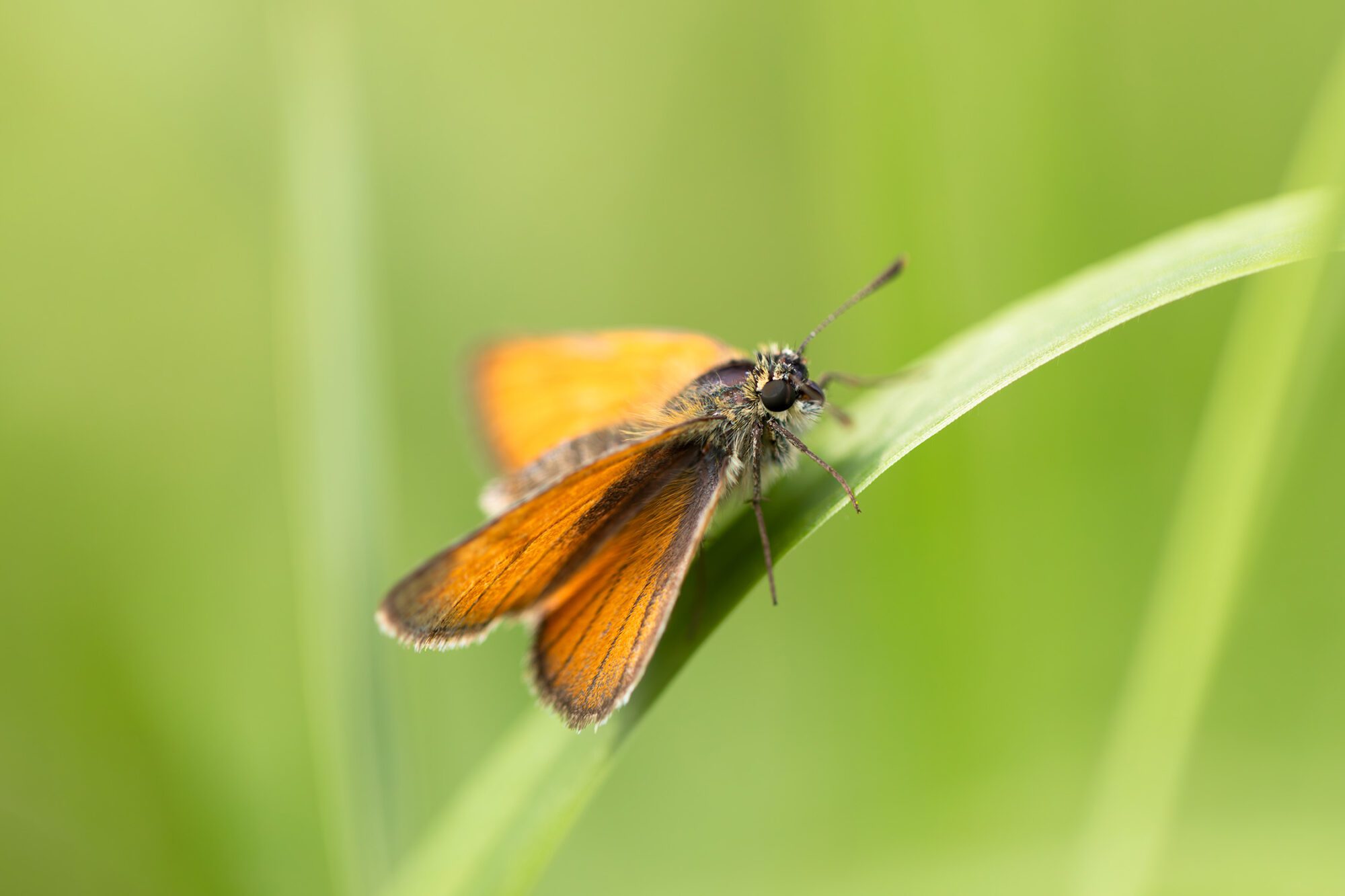Macro Photography & Save The Butterflies
Over the past week or so, macro photography has dominated the majority of my time spent outside with my camera. For the most part, my focus has been on photographing the various species of butterflies populating the fields and woodland around our village. What I love most about macro photography is that it challenges you to make multiple decisions quickly to capture a good shot. I love it! It’s so dynamic, having to consider the weather, the environment, the potential movement of the subject and any other factors that can influence your shot.
Another factor influencing my photography recently is the launch of Butterfly Conservation’s annual “Big Butterfly Count”. Knowing that I can contribute towards the conservation of butterflies and work on my macro project at the same time is a win-win!
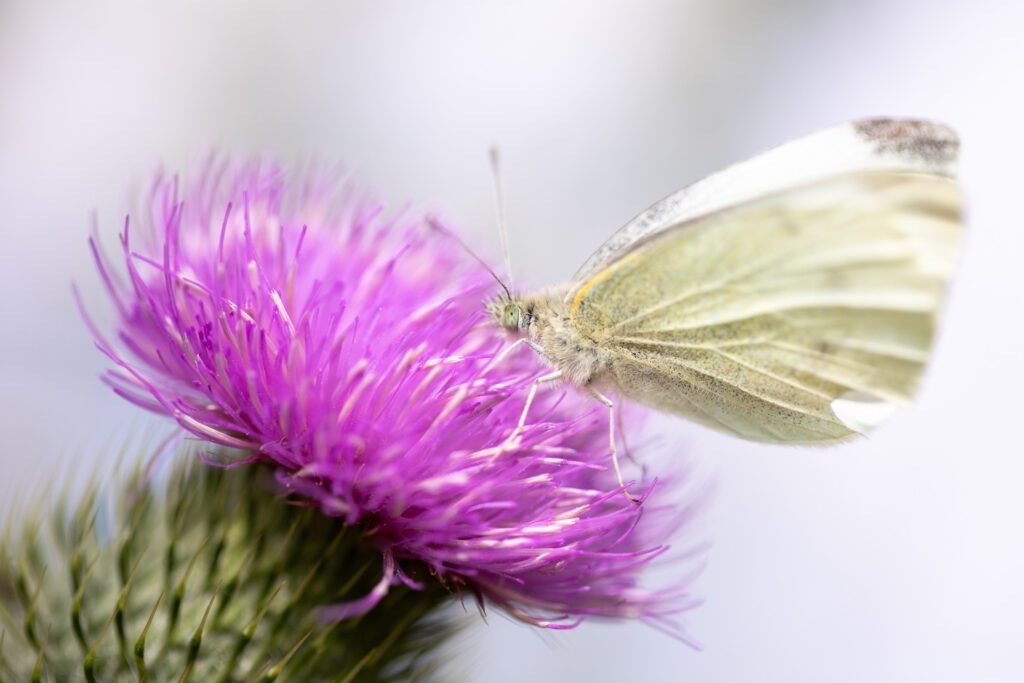
The Big Butterfly Count
On Friday 14th July, Butterfly Conservation launched its annual “Big Butterfly Count”. This fantastic initiative encourages the UK population to enjoy some time outdoors whilst counting the different species of butterflies seen. Figures can be logged in the Big Butterfly Count app and by doing so, local conservation can be supported. The app also has a great butterfly ID tool to help identify butterflies seen. It’s a great initiative and one that can be enjoyed as part of your daily dog walks, family time in the garden, or hikes in the great outdoors. To discover more about this fantastic initiative visit the Butterfly Conservation’s website via the link below.
https://bigbutterflycount.butterfly-conservation.org
Macro Photography And Results So Far
For the most part, the weather hasn’t been great over the past week or so. I say that, but I’m actually loving it! I’m a big fan of rain and cooler days. However, it doesn’t translate to great weather for macro photography, especially when combined with strong winds. That said, I haven’t let the weather beat me. I’ve still managed to get out most days and had some pretty amazing results.
Searching for butterflies in the stormy weather meant I had to be more vigilant. In storm conditions, butterflies don’t show themselves as much. For the most part, I had to find them. The majority of species I saw during the last week or so consisted of Large Whites, Small Skippers, Red Admirals and Small Whites. There was also the odd Meadow Brown, Comma and Gatekeeper but in much smaller numbers. Small Skippers are unbelievably photogenic if you can keep up with them! Being so small and agile, you really need to focus hard to track them in flight. This brings me to my first image of the blog.
Small Skipper – Macro Photograph #1
I decided to head to a local field that borders the edge of some woodland. The grass is, for the most part, wild and thriving with wildlife. As I arrived, I noticed an abundance of Large White butterflies. However, out of the corner of my eye, a hint of orange caught my eye against a sea of green grass. A Small Skipper. It was fairly windy so I imagine this little guy was doing its best to shelter from the wind. I approached cautiously, making no sudden movements that would cause it to take flight. Roughly around 5 metres away, I dropped to my hands and knees – camera in hand and edged closer. “Gotcha!”.
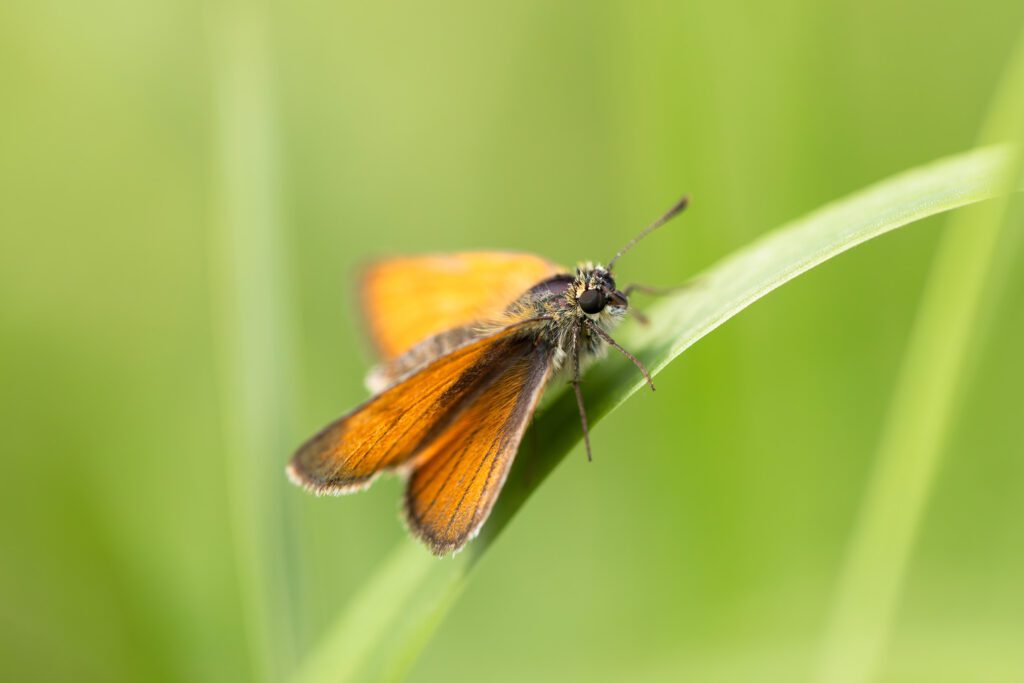
Focussing on the closest eye to the camera, I fired off a couple of shots. I opted for a fairly wide aperture to blur the background and simplify what would have otherwise been a chaotic sea of grass. The result was the shot above, a beautiful little Skipper contrasting nicely against the smooth green backdrop.
Small Skipper – Macro Photograph #2
After the success of the first day, I returned to the same spot with a newfound love for Small Skippers. Weather-wise, the sun was shining however, there were still at times, some strong gusty winds. Standing still for a few minutes, I began to notice life all around me. There was so much activity compared to the previous day. Large Whites, however, were still the dominant species.
A group of beautiful pink flowering thistles nearby seemed to attract anything and everything. I stood roughly 1 meter from the cluster and watched for about 5 minutes or so. Large Whites and hundreds of bees and hoverflies visited. Suddenly, there it was again. That small blob of orange whizzing past, landing on the thistles I’d been watching. Unbelievable! I already had my camera in hand and started to edge closer.
Around half a meter away, I lined up a composition. I used the thistle as a leading line whilst doing my best to keep some distant thistles in the background. Similar to the previous photograph, I chose a wide aperture and focussed on the Skipper’s closest eye. The result was pretty amazing, easily one of my favourites and I don’t say that often!
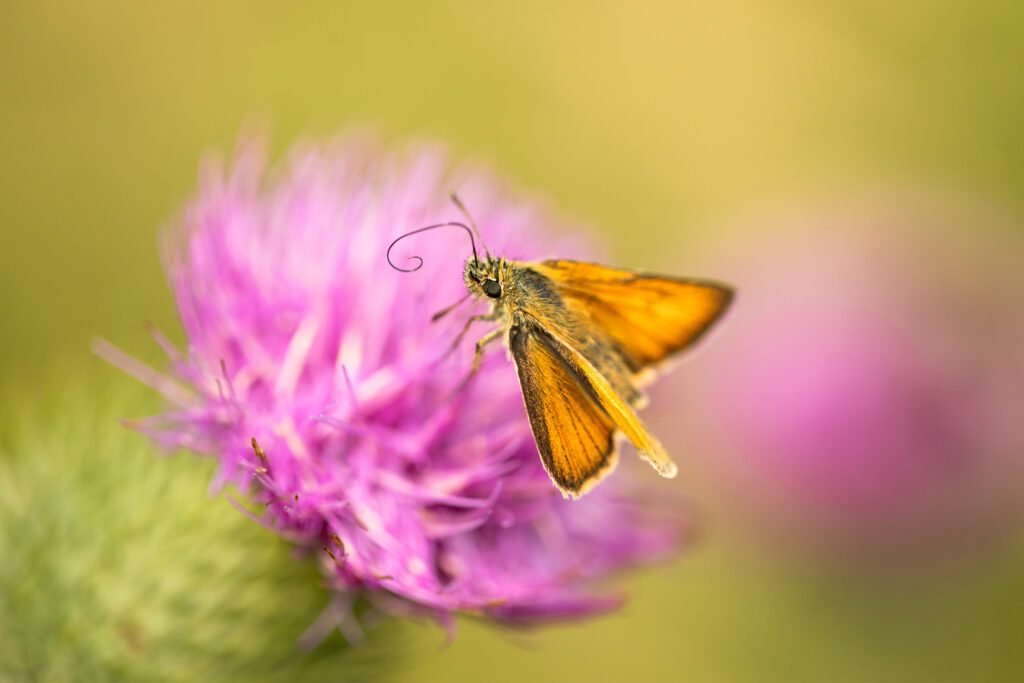
Large White – Macro Photograph #3
The final shot of this blog post came a few days later. Believe it or not, I was walking the dog and I actually had my camera with me for a change! We were heading along a trail that ran along the perimeter of a barley field. I’m not even sure how I noticed it but for some reason I did. A small patch of white amongst a sea of straw-coloured barley. A Large White. I can only imagine it was doing its best to shelter from the strong winds. It looked to be working as the stalks were hardly moving despite how gusty the wind was.
Luckily my dog didn’t scare it off – he was happy enough tracking a scent a bit further up the trail. I pulled my camera out and got as close as I dared to without scaring the butterfly. I bumped up the ISO and dropped the aperture to blur out the background and lined up a shot. Ideally, I’d have liked to have had the butterfly square on so that I could see its full profile however it wouldn’t have been possible without scaring it off. Again, focussing on the eye closest to the camera I took a couple of shots hoping at least one would be pin sharp. Below is the result.
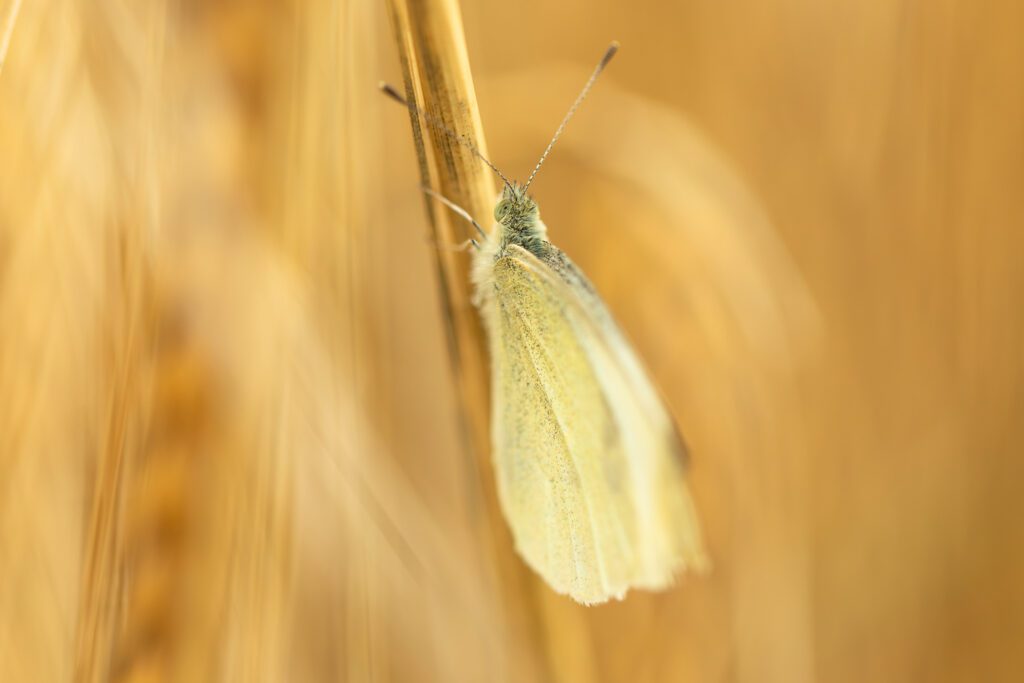
Macro Photography in Summary
All in all, a great week for macro photography, despite the weather not playing ball. I’ve managed to successfully submit two butterfly counts, of which, Large Whites dominated by a clear mile. I’ve had a great time photographing in tricky conditions and I would definitely recommend giving it a go! If you don’t have access to a dedicated macro lens, there are cheap methods which work just as well. Grab yourself a set of extension tubes and you’re good to go!
Over the next few weeks, I will continue to do my part and submit butterfly counts. You have until the 6th of August to contribute so there is plenty of time remaining to get involved. I’m hoping to see a broader variety and so will be exploring new areas around my local village. We are also quickly approaching heather season and I’m very excited. With that said, I’ll be returning to the mountains very soon to hopefully make the most of the relatively short flowering window. I can’t wait to see the mountains transformed by a dominating sea of pinks and purples.
Thanks for reading if you made it this far! If you would like to know any more about anything mentioned in this blog, please get in touch.

